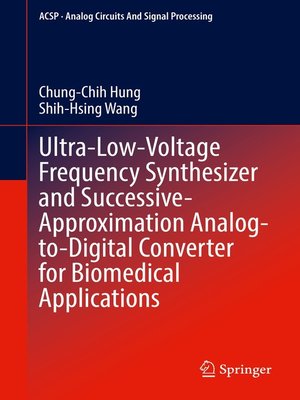Ultra-Low-Voltage Frequency Synthesizer and Successive-Approximation Analog-to-Digital Converter for Biomedical Applications
ebook ∣ Analog Circuits and Signal Processing
By Chung-Chih Hung

Sign up to save your library
With an OverDrive account, you can save your favorite libraries for at-a-glance information about availability. Find out more about OverDrive accounts.
Find this title in Libby, the library reading app by OverDrive.



Search for a digital library with this title
Title found at these libraries:
| Library Name | Distance |
|---|---|
| Loading... |
This book introduces the origin of biomedical signals and the operating principles behind them and introduces the characteristics of common biomedical signals for subsequent signal measurement and judgment. Since biomedical signals are captured by wearable devices, sensor devices, or implanted devices, these devices are all battery-powered to maintain long working time. We hope to reduce their power consumption to extend service life, especially for implantable devices, because battery replacement can only be done through surgery. Therefore, we must understand how to design low-power integrated circuits.
Both implantable and in-vitro medical signal detectors require two basic components to collect and transmit biomedical signals: an analog-to-digital converter and a frequency synthesizer because these measured biomedical signals are wirelessly transmitted to the relevant receiving unit. The core unit of wireless transmission is the frequency synthesizer, which provides a wide frequency range and stable frequency to demonstrate the quality and performance of the wireless transmitter. Therefore, the basic operating principle and model of the frequency synthesizer are introduced. We also show design examples and measurement results of a low-power low-voltage integer-N frequency synthesizer for biomedical applications. The detection of biomedical signals needs to be converted into digital signals by an analog-to-digital converter to facilitate subsequent signal processing and recognition. Therefore, the operating principle of the analog-to-digital converter is introduced. We also show implementation examples and measurement results of low-power low-voltage analog-to-digital converters for biomedical applications.






